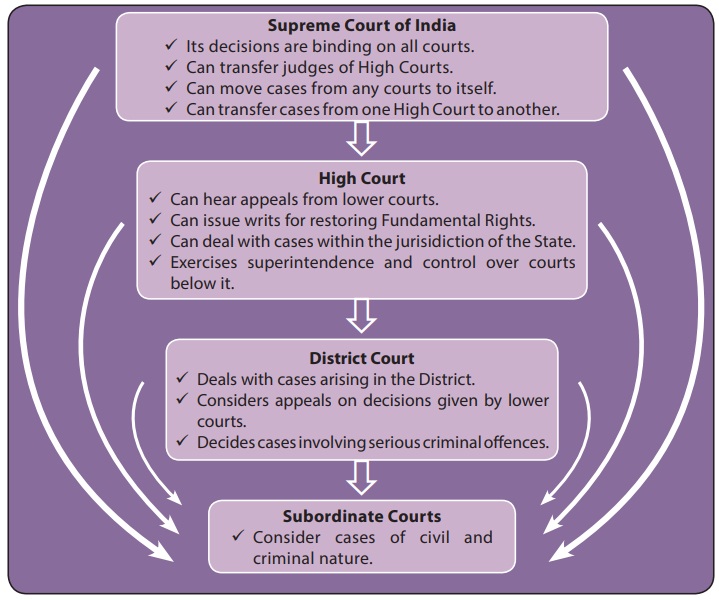The Judiciary | Chapter 7 | Civics | 8th Social Science - Structure of courts in India | 8th Social Science : Civics : Chapter 7 : The Judiciary
Chapter: 8th Social Science : Civics : Chapter 7 : The Judiciary
Structure of courts in India
Structure of courts in India
There are three different levels of
courts in our country.

District Courts: The Courts that hear civil cases at the district level are called District Courts
Sessions Court: The Courts that hear criminal cases are called the Sessions Court.
The Panchayat Courts: The Panchayat Courts
deal with Civil and Criminal cases at the village level.
The Revenue courts: The Revenue courts deal
with the cases of land records. It also assesses and collects land revenue
from the land holders.
Lok Adalat: Lok Adalat was set up to provide speedy justice. It hears and settles the disputes in the language
of the people in the public presence. A Lok Adalat is presided over by a
retired judge along with a lawyer and a social worker. Cases are put forward
without advocates. These cases are solved through mutual consent. The first Lok
Adalat was held on 1982 at Junagadh of Gujarat.
Fast Track courts: These courts were established in the year 2000 with an aim to clear the long pending Sessions
and other lower judicial cases.
Tele Law Initiative: To provide legal aid and
service to the people in rural areas, the Tele Law Initiative was launched
by the Ministry of Law and Justice in collaboration with the Ministry of
Electronics and Information Technology. People can seek legal advice from the
lawyers through video conferencing available at the common service centre on
the ‘Tele Law’ Portal – a technology enabled platform.
Family Courts: Family courts specifically handle family law matters. They are civil courts and are utilised
for various family related claims such as Child custody, Divorce, Adoption,
Juvenile issues etc.,
Mobile courts: Mobile courts will be of great relief to the rural people. It would create greater awareness
about the judicial system among the rural masses, cut costs for them and render
justice as their doorstep.
E–Courts: The E–Courts project was
established in 2005. According to the project all the courts will get
computerised. Judicial service centre is the part of e-court. The public as
well as the advocates can ask directly the case status and next hearing dates
with free of cost.
NALSA – The National Legal
Service Authority has been constituted under the Legal Services Authorities Act,
1987 to provide free Legal Services to the weaker sections of the society and to
organise Lok Adalats for amicable settlement of disputes.
Related Topics